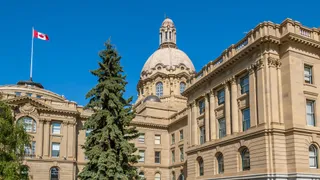
Lawmakers hear praise for TRIA but warn over captive insurer exploitation
A US Congressional hearing on the future of the Terrorism Risk Insurance Act (TRIA), has heard sharply contrasting perspectives, including a warning over the misuse of captives, on the programme’s achievements.
The Act, originally passed in 2002 to stabilise the market after the 9/11 attacks, is due to expire on 31 December 2027.
Michelle Sartain, president of Marsh US & Canada, hailed TRIA as “a model public–private partnership” that restored insurance capacity at a critical moment. She argued that the Act continues to underpin economic resilience by ensuring “policyholders have access to affordable and widely available terrorism insurance coverage, which allows investments to be made and the economy to function.”
Sartain emphasised four key aspects of TRIA’s importance: its effective design, the risks of delayed reauthorisation, its role in workers’ compensation, and current market trends. She praised the structure of the programme, which provides “a transparent federal backstop that shares catastrophic terrorism losses between the private sector and the government.” According to her, this framework has fostered competition without stifling private innovation, while ensuring coverage across vulnerable sectors such as healthcare and education. Marsh’s own data shows uptake rates of 61 per cent in healthcare and 47 per cent in education—figures she said highlight the reliance of vital services on TRIA’s protections.
Warning of the dangers of legislative delay, Sartain noted that “uncertainty alone causes markets to withdraw coverage, insurers to pull back and capital markets to tighten.” The consequences, she explained, could be higher premiums, restrictive terms, and the stalling of real estate, construction and energy projects where terrorism cover is contractually required.
She also underscored the unique role TRIA plays in the workers’ compensation market, where terrorism cannot be excluded and insurers face potentially unlimited losses. Without TRIA, she warned, state-funded pools risk insolvency. Finally, Sartain pointed to emerging threats such as cyber risks, violent extremism and geopolitical instability, concluding: “Reauthorisation signals stability to the US and global markets, reassuring investors and policyholders alike.”
However, Jason Schupp, founder of Centres for Better Insurance, struck a markedly different tone. While acknowledging TRIA’s intent, he criticised how large corporations have used “special purpose insurance companies known as captives” to extract disproportionate benefits. Treasury data, he noted, shows that “up to 96 cents out of every dollar that would be paid out under the programme would go to large corporations through their captive insurance subsidiaries.”
Citing striking examples, Schupp explained that The New York Times Company secured a $1.3 billion terrorism policy through its captive for a mere $10 million premium, with taxpayers potentially liable for $1 billion of losses. Amazon, he added, arranged a $2 billion policy under similar terms. In such cases, corporate captives bear only “a token deductible”, leaving the federal backstop exposed.
Schupp also criticised the statutory surcharge mechanism requiring Treasury to recoup 140 per cent of payouts from all commercial policyholders. He argued this creates a gross imbalance: “Captives in large corporations get billions of dollars, but only pay millions of dollars in surcharges. Small businesses, local governments and non-profits receive millions, and their policyholders pay billions.”
With secrecy laws shielding many captives from scrutiny, Schupp warned that the problem could be even more severe, citing his own discovery of a captive licensed in Washington DC but ultimately owned by a sanctioned Chinese military company.
Both initial witnesses agreed TRIA plays a crucial role in managing terrorism risk, but their testimony laid bare the competing pressures lawmakers face: ensuring market stability and economic resilience, while addressing what Shoupp described as “sophisticated companies figuring out how to exploit benefits under a federal programme.”
Did you get value from this story? Sign up to our free daily newsletters and get stories like this sent straight to your inbox.

